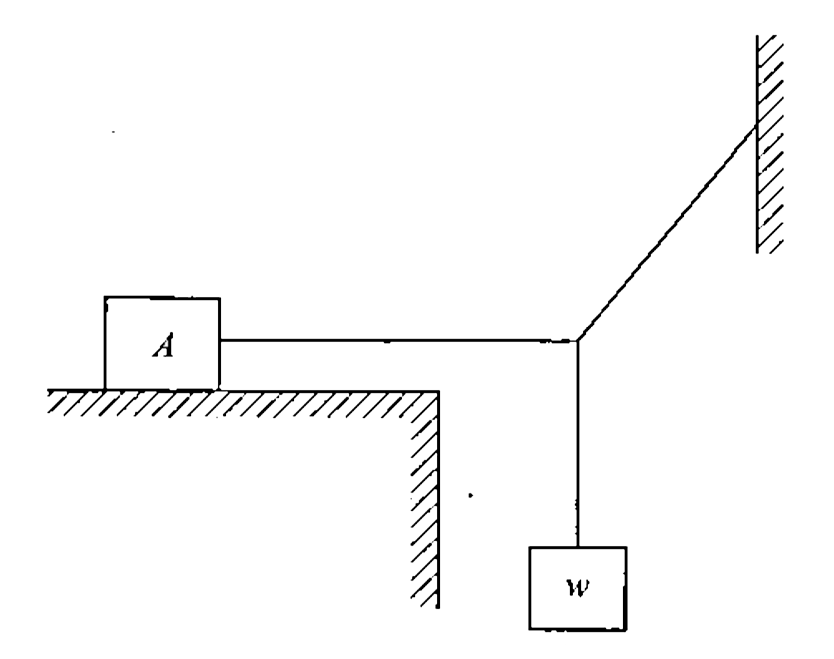Consider the situation as shown in the figure. Find the maximum value of m1/m2 so that the system remains at rest. What will happen if tanθ<μ?
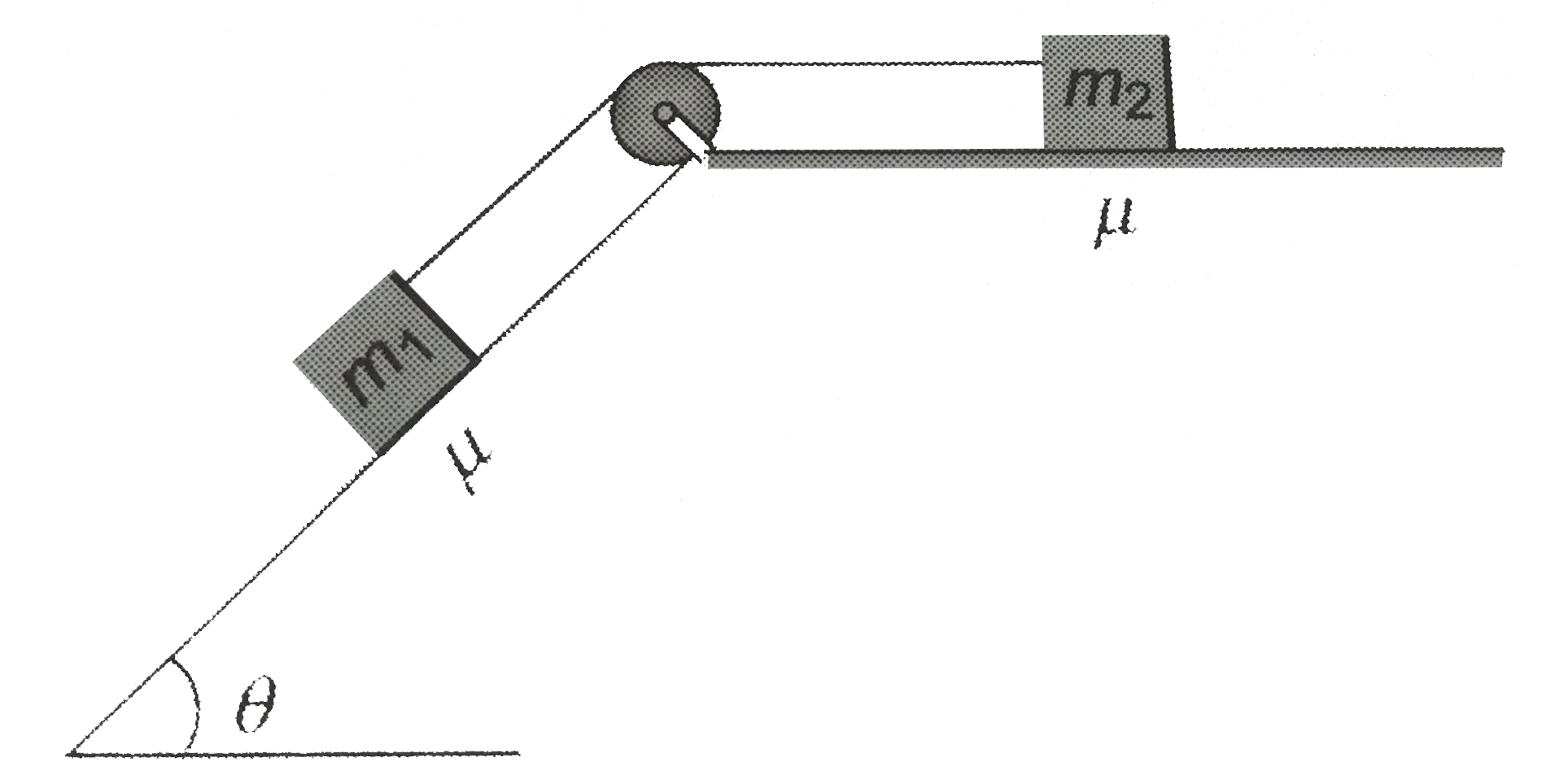
Since we are interested in maximum value of m1/m2, equilibrium is limiting
f=fmax=μN
For m1:N1=m1gcosθ,f1=μN1=μm1gcosθ
For m2:N2=m2g,f2=μN2=μm2g
For the system to be at rest
m1gsinθ≤(f1+f2)
m1gsinθ≤(μm1gcosθ+μm2g)
m1(sinθ−μcosθ)≤μm2
m1m2≤μ(sinθ−μcosθ)
(m1m2)max=μsinθ−μcosθ
If tanθ<μ [i.e. θ<tan−1μ]
sinθcosθ<μ⇒sinθ<μcosθ
(sinθ−μcosθ) lt 0
i.e. (m1m2) is negative
i.e. the system will not slide for any value of m1/m2θ<tan−1μ.
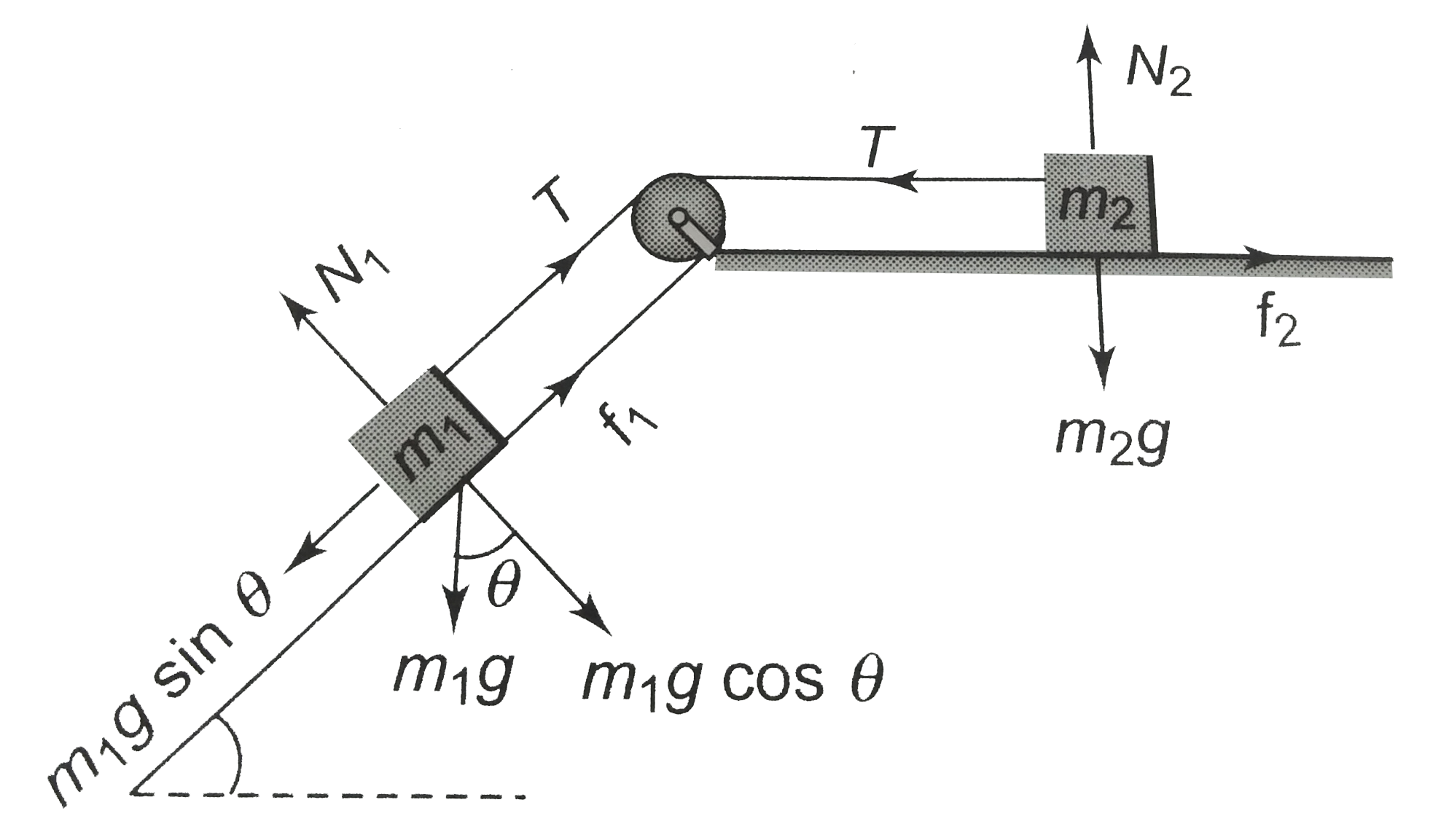
Topper's Solved these Questions
Similar Questions
Knowledge Check
- Question 1 - Select One
Consider the situation as shown in the figure.
The maximum value of m so that the blocks do not move is
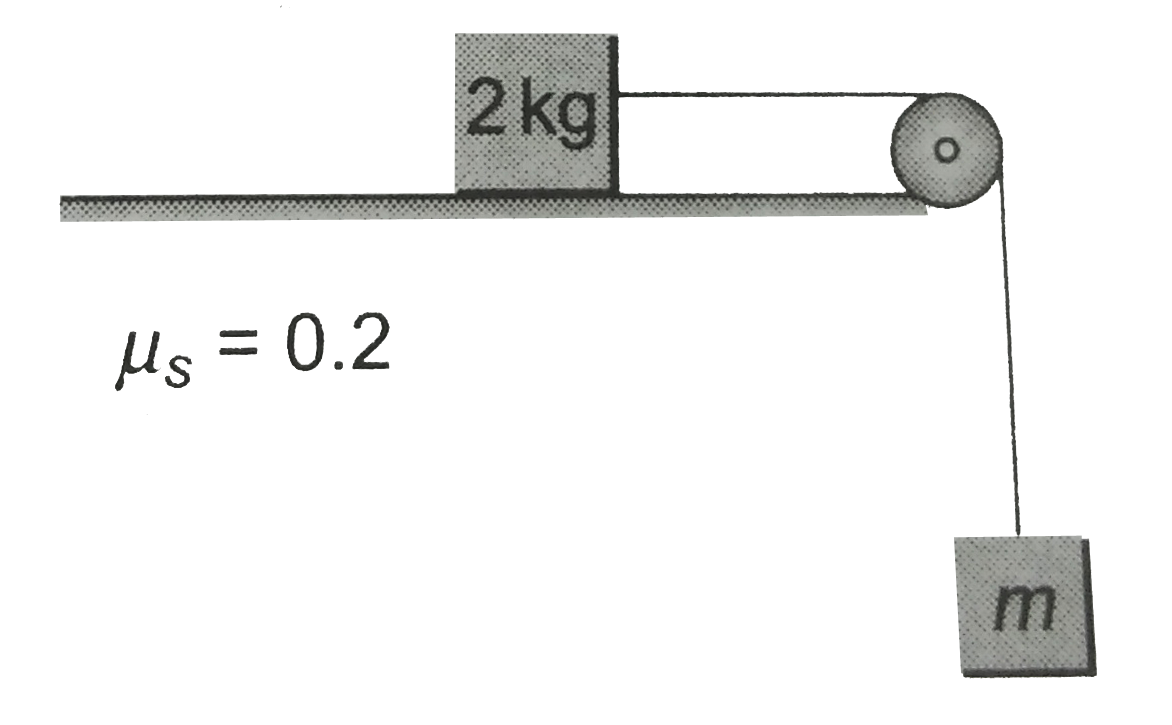 A0.2kgB0.4kgC0.6kgD0.8kg
A0.2kgB0.4kgC0.6kgD0.8kg - Question 2 - Select One
Consider the situation as shown in the figure. The system is free to move.

The force by the rope on the block is FM/(M+m)AOnly if the rope is uniformBin gravity free spaceConly if F>(M+m)gDin all cases
Consider the situation as shown in the figure. The boy of mass M holds the light rope and the system is at rest. If m is mass of the box, find the force exerted by the boy on the rope and contact force beteween the boy and the box.
 View Solution
View SolutionConsider the situation shown in figure. Find the maximum angle theta for which the light suffers total internal reflection at the vertical surface.
View SolutionConsider the situation shown in figure. Find the maximum angle theta for which the light suffers total internal reflection at the vertical surface.
View SolutionFor the given situation,the system is at rest,find the value of mass m :-
View Solution
Consider the situation as shown in the figure. The system is released from rest. Find the speed of m when it has traveled a distance d on a rough surface.View SolutionIn the arrangement shown in figure what should be the mass of block A, so that the system remains at rest ? Neglect friction and mass of string.
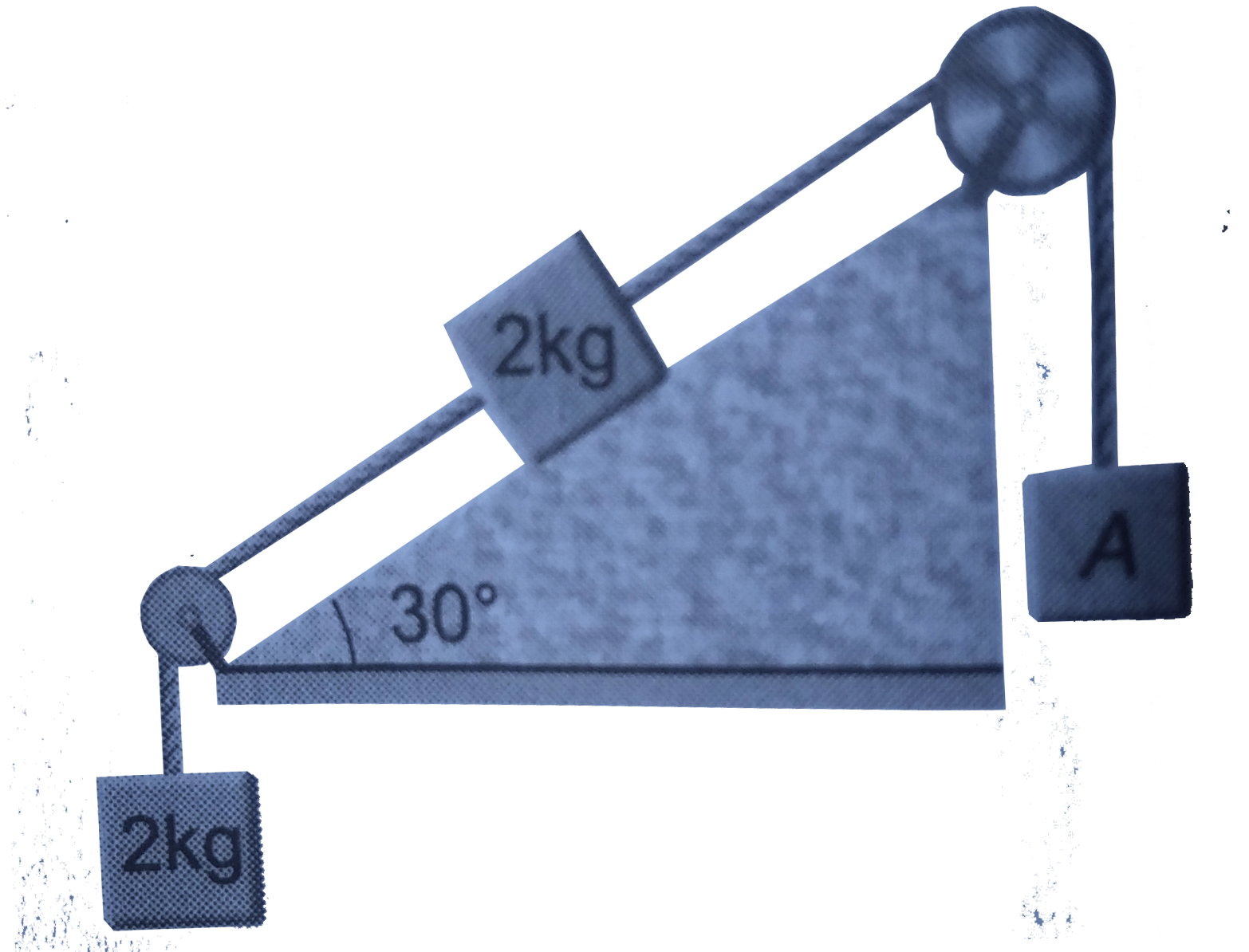 View Solution
View Solution


